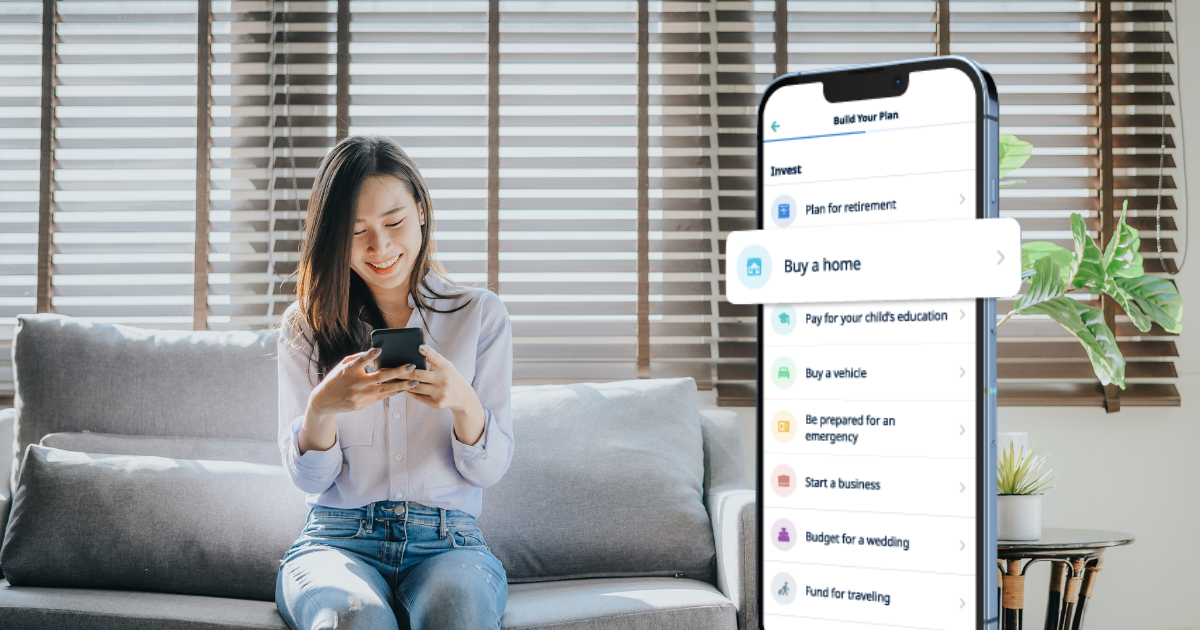
- Homeownership is one of those achievements that complete the life of most Malaysians, and like climbing a mountain, there is a great sense of fulfilment in conquering the peak.
Whether you are a first-time homebuyer or aspiring property investor, buying a house can give anyone a serious case of the heebie-jeebies. After all, the financial commitment involves not just substantial initial one-time payments, but almost a whole lifetime of servicing the loan.
However, homeownership is one of those achievements that complete the life of most Malaysians, and like climbing a mountain, there is a great sense of fulfilment in conquering the peak.
So, to help you navigate through what seems like a daunting rigmarole, we have compiled a step-by-step guide, breaking down the complexity of reaching your #HomeGoal fund.
Step 1: What are the costs involved?
Unlike buying a handbag, a home purchase is a long-term commitment that involves a series of outlay at every stage – right from the day you find it to the day you part with it. Here is a brief.
Firstly, before you go shopping for a home, make sure you have a sum of at least 10% of the purchase price. However, if you get less than a 90% loan, you will also need to raise the remaining loan-to-value sum before you sign the sale and purchase agreement (SPA).
Next, be prepared to foot out legal fees and stamp duties on not just the SPA, but also the loan agreement – usually in the region of four figures or more – based on your purchase price.
Here’s an overview of the direct costs associated with home purchase according to purchase price:

Another substantial sum is for the memorandum of transfer, which buyers of new properties (from developers) will need to pay, generally, within a few years after delivery of vacant possession.
Once you have received the keys to your house, you will need to decide on a budget for renovation, furnishing and other moving-in costs.
For strata properties, there are additional costs to be factored in such as the monthly maintenance fees and sinking fund, which is usually in the range of three figures, depending on the size of your unit.
Step 2: Design a budget
The second step to your homebuying journey is determining a reasonable price tag – and by that we mean one that is comfortably within your income level and lifestyle. This includes choices you make on other expenditures and debts (hire purchase, instalment plans, insurance, etc).
Knowing the spectrum of costs involved in a home purchase, how do you arrive at what price range you can afford monthly without having to live on instant noodles by the end of every month?
The rule of thumb in Malaysia is that you can borrow up to 30% of your gross income. Based on this, to buy a RM500,000 home, you must earn at least RM6,000 per month. This is a good gauge, considering the other expenses you need to maintain a reasonable lifestyle.
However, there are also exceptions to this rule, where the widening gap between the median house price and median income has prompted some financial institutions to come up with creative loan plans to cater to especially first-time homebuyers.
Step 3: Set a timeline
Once you know how much money you’d need, assess how much time you need to raise it. Be reasonable. If you wanted to lose 10kg, you can’t possibly do it in a week.
Similarly, a plan to double your savings in a year means your investments must have a 100% annual return. Unless you have a crystal ball to predict the jackpot number or the share market’s rise and fall, such returns are promised only in the scheme of scams.
Setting a time period helps you pace out your spending and savings in a reasonable pattern to reach your #HomeGoal fund without jeopardising other essential needs.
To be realistic, try to look beyond the short term and give yourself a longer runway to achieve mini goals in order for you to sustain the costs of owning a house.
Step 4: Make smart investment choices
While it does take financial discipline and personal sacrifices to stay the course, the world of finance has evolved beyond fixed deposits to help you save for your #HomeGoal fund.
The market offers a host of investment products ranging from conservative savings with guaranteed returns but lower yields, to high-yield investments that naturally come with high risks. Besides the straightforward assets like fixed deposits, unit trusts and stocks (initial public offerings, penny stocks or blue chips), other financial instruments are bonds, money market, real estate investment trusts (REIT), cryptocurrencies and more.
A point to remember is to keep aside three to six months of expenses as an emergency fund to ensure you don’t dig into your #HomeGoal fund, which could jeopardise its growth.
Step 5: Review and reset
Regularly review your progress towards your #HomeGoal fund and make adjustments as needed. Track your savings, reassess your budget, and make necessary changes to ensure you stay on track.

We often overlook our monthly spending until we scrutinise it closely. Take a comprehensive look at all your expenses. Are there any unnecessary purchases or do you have surplus funds in certain months? Analyse your spending to identify areas where you can cut costs and boost your savings.
To cultivate a discipline in savings, consider investing options like StashAway, a smart investment platform that can help you balance and optimise your investment regularly to ensure your asset allocation is within its target.
Disclaimer: While every effort has been made to ensure that the information provided in this article is accurate, reliable, and complete as of the time of writing, it is for general information only, and should not be relied upon to make any financial, investment, real estate or legal decisions. The information should not substitute advice from trained professionals, and we accept no liability if you use the information to make decisions.
Looking to buy a home? Sign up for EdgeProp START and get exclusive rewards and vouchers for ANY home purchase in Malaysia (primary or subsale)!





